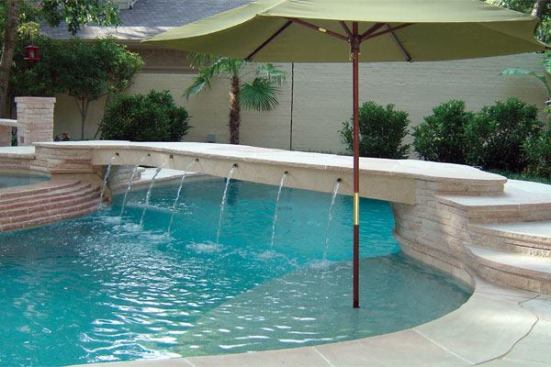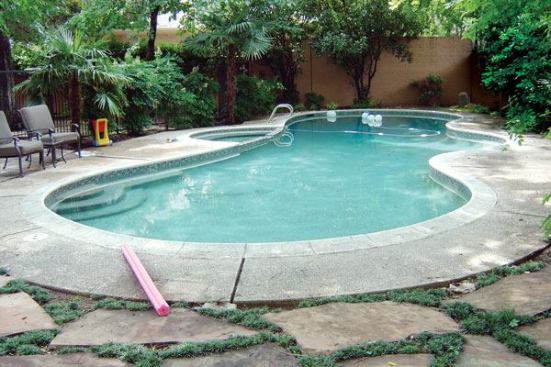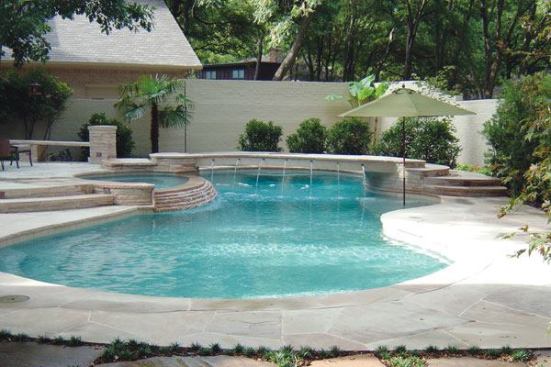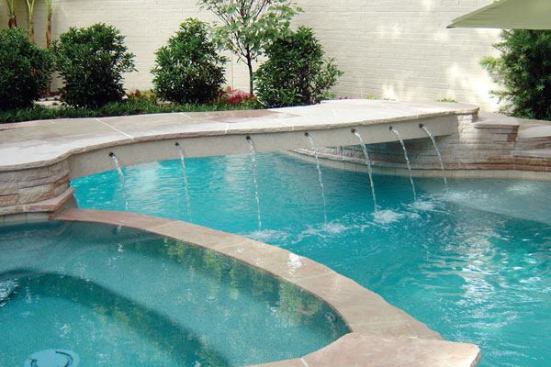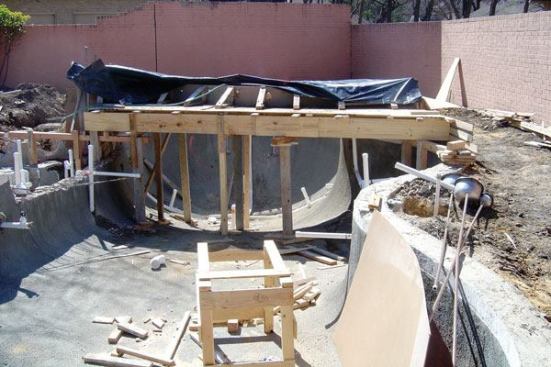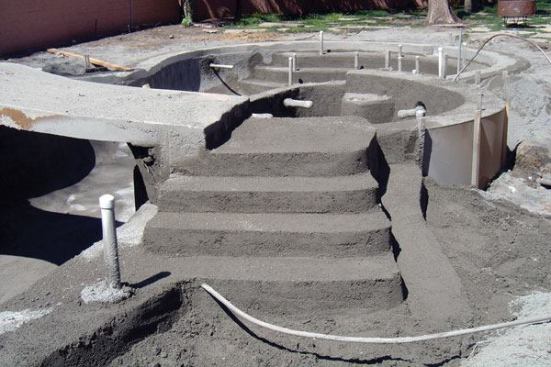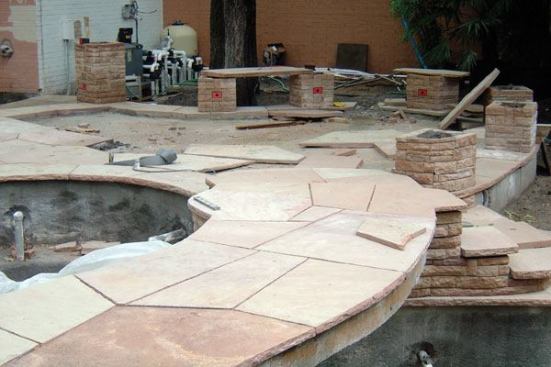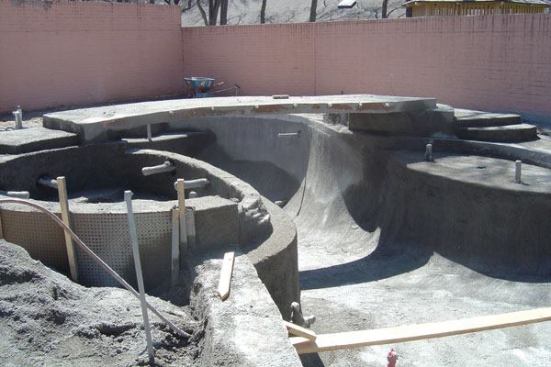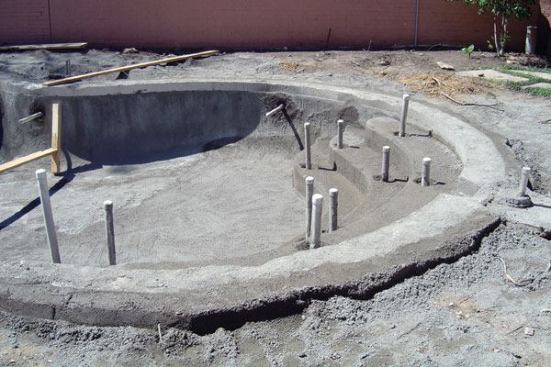Bridge construction
Wood and his engineer had to address the amount of stress a new bridge would add to the existing pool structure. This required larger-than-normal steel — No. 5 bars, measuring 5/8-inch thick, in grade 60. “The whole mat had to be welded together — it’s not just tied steel,” Wood says.
After the concrete was poured and vibrated in place, it was saturated in water, wrapped in plastic to trap the moisture, and left to cure for 21 days.
More reinforcement came when it was time to gunite the rest of the project. “On each side of the pool, we excavated the soil out below the bond beam and completely [gunited] the bridge landing,” Wood says. “The steps are not just built on top of the ground, they’re built down in. That added more strength to the bridge.”
During the gunite phase, they also addressed a cosmetic issue. After the bridge was poured and the forms stripped, it stuck up into the air with right angles where it met the pool. “It didn’t look very good,” Wood says. So crews gunited the transition from bridge to pool and deck to soften it.
No recommended contents to display.
